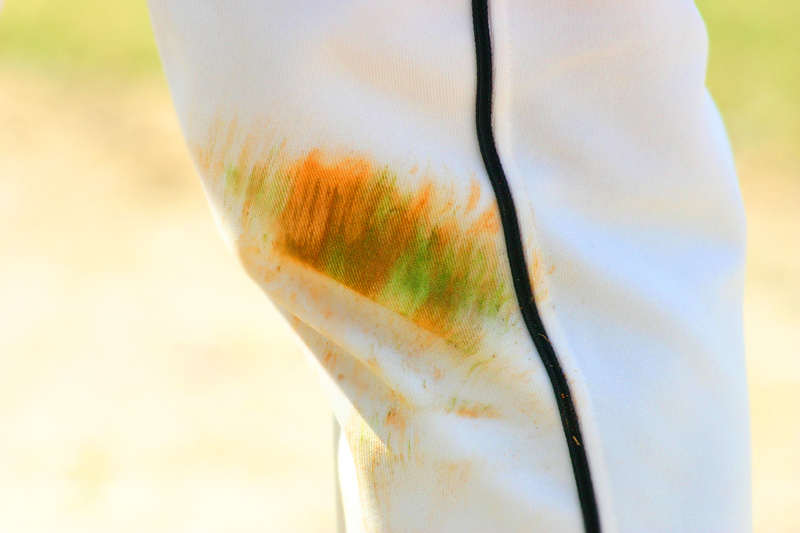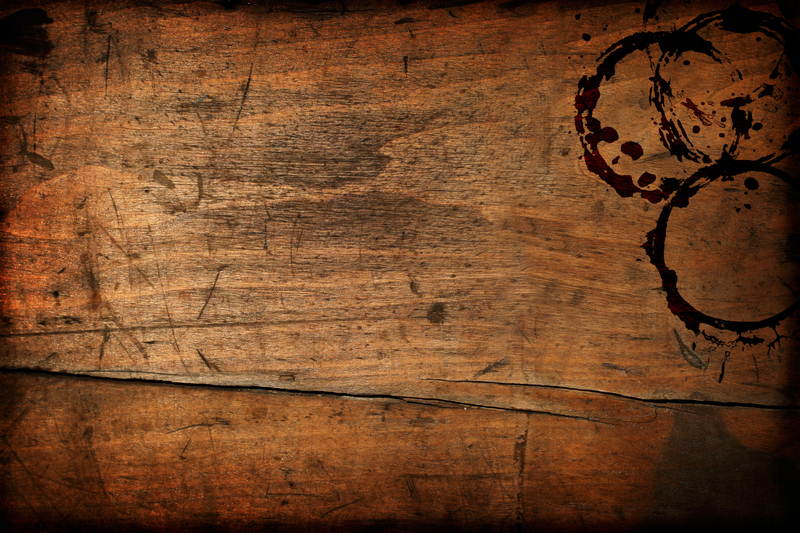Burnt-On Residue Begone: Stovetop Cleaning Tips
Posted on 22/05/2025
Burnt-On Residue Begone: Stovetop Cleaning Tips
If you've ever sliced, sauteed, or simmered in the kitchen, you know that burnt-on residue can appear on your stovetop even when you're being careful. A splatter here, a boil-over there, and suddenly your gleaming stovetop is covered with stubborn, baked-on messes. While these marks may seem impossible to remove, there's no need to worry. With the right techniques and a bit of elbow grease, you can restore your stovetop to its former shining glory. This comprehensive guide will walk you through stovetop cleaning tips that will make even the most stubborn stains a thing of the past.
Why Is Stovetop Cleaning Important?
Keeping your stovetop clean isn't just about aesthetics; it's about safety and hygiene, too. Burnt-on food and grime can harbor bacteria, attract pests, and even pose a fire hazard if left unchecked. Residue buildup can also affect your cooktop's efficiency, causing uneven heating and affecting the taste of your meals. Regular cleaning ensures your appliance operates safely and looks great -- and prevents more intensive cleaning jobs down the road.

Understanding Your Stovetop Type
Before you dive into removing burnt-on stains, it's essential to know what kind of stovetop you have. Different surfaces require different methods and cleaners.
- Gas Stovetops: These have removable burners and grates. Spills can seep under the grates, requiring deeper cleaning.
- Electric Coil Stovetops: Feature raised coils that can usually be removed, but the drip pans underneath often catch burned-on food.
- Glass or Ceramic Stove Tops: Smooth and modern, but susceptible to scratching, so abrasive cleaners must be avoided.
- Induction Cooktops: Similar to glass tops but use electromagnetic energy, requiring extra care to prevent scratches and streaks.
Always check your manufacturer's recommendations before using any new cleaning product or tool on your stovetop.
The Best Practices for Everyday Stovetop Cleaning
The easiest way to banish burnt-on residue is to prevent it from building up in the first place. Here are some everyday stovetop cleaning tips:
- Wipe Up Spills Promptly: As soon as your stovetop cools, use a damp cloth or sponge to wipe away spills before they harden.
- Use Mild Cleaners: A gentle soap and warm water combo works well for daily maintenance. For glass or ceramic tops, use a dedicated cleaner.
- Don't Forget Knobs and Controls: Grime loves to collect around knobs. Pop them off (if possible) and wash with soapy water.
Tip: Make a habit of quickly cleaning the stovetop after each meal to prevent food from hardening.
How to Remove Burnt-On Residue: Step by Step
Stubborn stains happen, even to the tidiest of cooks. Here's a tried-and-true process for removing burnt-on residue from any type of stovetop:
Step 1: Gather Cleaning Supplies
- Baking soda
- White vinegar
- Lemon juice
- Non-abrasive scrub pads or microfiber cloths
- Plastic scraper (especially for glass tops)
- Dish soap
- Spray bottle
- Gloves
Step 2: Remove Removable Parts
Carefully take off burner grates, coils, and knobs. Soak these in hot, soapy water to loosen grime.
Step 3: Loosen the Burnt-On Residue
- For gas and electric stovetops, sprinkle baking soda liberally over the residue. Spray or drizzle with a 1:1 mixture of hot water and vinegar or lemon juice.
- For glass/ceramic tops, cover the stains with a paste of baking soda and water. Lay a warm, damp cloth over the paste. Let sit for 15-30 minutes to lift grime.
Step 4: Scrub Gently
- Use a non-abrasive scrub pad or microfiber cloth to gently scrub the softened residue. For tough spots, a plastic scraper can help -- but never use metal, as it may scratch the cooktop.
- Wipe away loosened debris with a clean, damp cloth.
Step 5: Clean and Rinse
- Wash all the removed parts (grates, coils, knobs) with warm, soapy water. For really stubborn stains, let them soak longer and use a paste of baking soda and water.
- Rinse the stovetop with a clean, damp sponge or microfiber towel to remove any residue from cleaning agents.
Step 6: Polish and Reassemble
Use a dedicated stovetop cleaner or a solution of vinegar and water to give the entire surface one last polish. Buff with a dry microfiber cloth for a streak-free finish. Once dry, replace the burners and knobs.
Alternative Methods for Removing Burnt Stains
Baking Soda and Hydrogen Peroxide
For especially tough, burnt stains, try combining baking soda and hydrogen peroxide to form a paste. Apply to the residue, let sit for 20 minutes, then scrub gently. Hydrogen peroxide helps break down organic material, making even the most stubborn marks easier to remove.
Ammonia Fume Method (For Grates and Burner Caps ONLY)
Place greasy grates or burner caps in a strong zip-top bag. Add a small amount of ammonia (about 1/4 cup), seal the bag, and leave it overnight outdoors or in a garage. The fumes loosen burnt-on food. Warning: Never mix ammonia with other cleaners, and always use in a well-ventilated area!
Steam Cleaning for Stovetops
Handheld steam cleaners can be a game-changer for stovetop cleaning. Use the steam nozzle to blast away burnt residue, then wipe clean. This is especially effective for getting into crevices and around burner knobs.
Commercial Stovetop Cleaners
There are numerous commercial cleaners designed specifically for removing burned-on messes from both traditional and glass stove tops. Read labels carefully to ensure they're compatible with your appliance. Apply only as directed, and always rinse thoroughly.
How to Clean Specific Stovetop Types
Gas Stovetops
- Burner grates and caps: Soak in hot, soapy water. Use a degreaser if necessary. Rinse and dry before replacing.
- Surface stains: Follow the baking soda and vinegar method. Avoid letting water seep into the gas ports.
Electric Coil Stovetops
- Coils: Wipe with a damp cloth (unplug first). Avoid immersing coils in water.
- Drip pans: Remove, soak, scrub, and dry before replacing.
- Surface stains: Use baking soda paste or a gentle cleaner.
Glass or Ceramic Stovetops
- Avoid abrasives. Use only non-scratch pads. Specialized glass stovetop cleaners are ideal.
- Heated stains: Apply baking soda paste and cover with a damp towel to loosen before scrubbing.
- Lime scale spots: Vinegar helps dissolve mineral deposits.
Induction Cooktops
- Wipe with a damp microfiber cloth after each use. Avoid harsh chemicals.
- For sticky spills: Use a diluted vinegar solution for a streak-free shine.
- Polish with a dry microfiber towel.
Preventing Future Burnt-On Stains
Prevention is the best way to keep your stove top sparkling clean. A few simple habits can help you avoid burnt-on disasters:
- Use splatter guards and lids when frying or boiling to minimize messes.
- Don't overfill pots or pans, which can cause boil-overs.
- Wipe up spills immediately after the surface cools.
- Schedule a deep clean once a week to tackle any buildup before it bakes on.
Stovetop Cleaning Myths Debunked
There is plenty of cleaning advice swirling around out there, but not all of it is accurate. Let's separate myth from fact:
-
Myth 1: "Metal scrubbers are okay for tough stains."
Fact: Metal wool or blades will scratch and damage most cooktops, especially glass or ceramic surfaces. -
Myth 2: "Bleach is the best cleaner."
Bleach can discolor surfaces and damage cooktop coatings. Stick to gentler alternatives. -
Myth 3: "Stovetop cleaning isn't necessary unless it looks dirty."
Invisible residues can still affect performance and hygiene.
Stovetop Cleaning Safety Tips
- Always unplug electric stovetops before cleaning coils or drip pans.
- Wait for the stovetop to cool completely before starting to clean.
- Ventilate your kitchen if using strong cleaners or ammonia.
- Wear gloves to protect your skin from harsh chemicals or hot water.
- Never mix ammonia and bleach - the fumes are toxic!
Eco-Friendly Stovetop Cleaning Solutions
For those who want a greener approach to stove cleaning, look no further than your pantry! Baking soda, white vinegar, and lemon juice are powerful, non-toxic cleaners that break down grease and remove stains without harsh fumes.
- Baking soda: Gently abrasive and deodorizing.
- White vinegar: Cuts through greasy residue and neutralizes odors.
- Lemon juice: Naturally antibacterial and leaves a fresh scent.
Bonus tip: Add a few drops of your favorite essential oil (like lavender or tea tree) to your cleaning solution for an extra burst of freshness.

Quick-Reference FAQ: Burnt-On Residue Removal
-
Can I use a razor blade on glass stovetops?
Only if the manufacturer allows it, and always use special glass scrapers at a very shallow angle to avoid scratching. -
What if the residue won't come off after several attempts?
Repeat the baking soda paste method, letting it sit longer. For really stubborn stains, try a commercial stovetop cleaner made for your surface type. -
How often should I deep-clean my stovetop?
Once a week is ideal for avid cooks, but frequency may vary based on usage.
Summary: Tackle Burnt-On Stovetop Residue Like a Pro
Burnt-on residue doesn't have to be a permanent eyesore on your stovetop. With the right tools, techniques, and a little patience, you can remove even the toughest stains and prevent new ones from forming. Whether you have a gas, electric, glass, or induction stovetop, these comprehensive, SEO-optimized stovetop cleaning tips will help you keep your kitchen looking spotless and safe -- no matter what's for dinner.
Remember, consistency is key! Clean a little every day, tackle tough stains promptly, and use the methods best suited to your specific appliance. Your stovetop will thank you with years of flawless cooking and sparkling shine.
Ready to say goodbye to burnt-on messes? Start using these stovetop cleaning strategies today and enjoy a kitchen that's always guest-ready!





